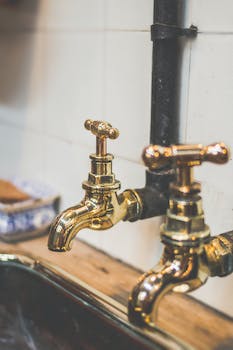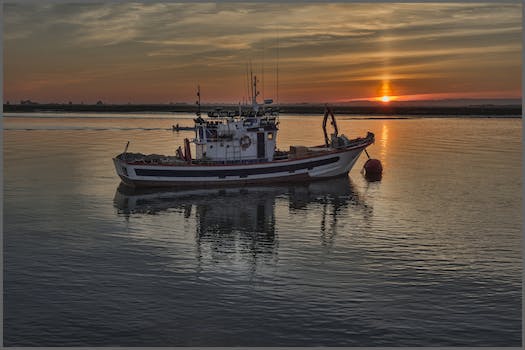Table of Contents
“Unlock the Secrets of RV Plumbing with Our Comprehensive Guide!”
RV plumbing can be a daunting task for many RV owners. It can be difficult to understand the different components and how they work together. This guide will provide a comprehensive overview of RV plumbing, from the basics of how it works to more advanced topics such as maintenance and repairs. We will cover the different types of RV plumbing systems, the components that make them up, and the tools and supplies needed to keep them running smoothly. We will also discuss common problems and how to troubleshoot them. Finally, we will provide tips and tricks for keeping your RV plumbing system in top condition. With this guide, you will be able to confidently tackle any plumbing issue that may arise.
How to Maintain Your RV Plumbing System

Maintaining your RV plumbing system is essential for keeping your RV in top condition. Here are some tips to help you keep your RV plumbing system running smoothly:
1. Check your water lines regularly. Look for any signs of wear and tear, such as cracks or leaks. If you find any, replace them immediately.
2. Make sure your water heater is in good working order. Check the temperature setting and make sure it’s not too hot. If it is, turn it down to prevent scalding.
3. Clean your RV’s water tank regularly. This will help prevent the buildup of bacteria and other contaminants.
4. Check your RV’s sewer lines for any blockages or clogs. If you find any, use a sewer snake or other tool to clear them.
5. Make sure your RV’s toilet is in good working order. Check the flapper valve and make sure it’s not leaking. If it is, replace it.
6. Inspect your RV’s plumbing fixtures regularly. Look for any signs of corrosion or damage. If you find any, replace them immediately.
7. Make sure your RV’s plumbing system is properly winterized. This will help prevent any damage from freezing temperatures.
Following these tips will help you keep your RV plumbing system in good working order. If you have any questions or need help, contact a professional RV technician.
Common RV Plumbing Problems and How to Fix Them
RV plumbing problems can be a real headache. From clogged drains to leaky pipes, there are plenty of issues that can arise. Fortunately, most of these problems can be fixed with a few simple steps. Here are some of the most common RV plumbing problems and how to fix them.
1. Clogged Drains: Clogged drains are one of the most common RV plumbing problems. To fix this issue, you’ll need to use a plunger or a drain snake. If the clog is too deep for either of these tools, you may need to use a chemical drain cleaner.
2. Leaky Pipes: Leaky pipes can be a real nuisance. To fix this issue, you’ll need to locate the source of the leak and replace the damaged pipe. If the leak is coming from a joint, you may be able to fix it with some plumber’s tape.
3. Low Water Pressure: Low water pressure can be caused by a variety of issues, including clogged pipes or a faulty water pump. To fix this issue, you’ll need to check the pipes for any blockages and replace the water pump if necessary.
4. Frozen Pipes: Frozen pipes can be a real problem in cold climates. To fix this issue, you’ll need to thaw the pipes with a hair dryer or a space heater. If the pipes are too far gone, you may need to replace them.
These are just a few of the most common RV plumbing problems and how to fix them. With a little bit of knowledge and the right tools, you can easily tackle most of these issues on your own.
The Benefits of Installing an RV Water Filtration System
Installing an RV water filtration system is a great way to ensure that you and your family are drinking clean, safe water while on the road. Not only does it provide peace of mind, but it also offers a number of other benefits. Here are just a few of the advantages of installing an RV water filtration system:
1. Improved Taste: RV water filtration systems remove unpleasant tastes and odors from your water, making it taste better and more refreshing.
2. Better Health: RV water filtration systems remove harmful contaminants from your water, such as lead, chlorine, and other chemicals. This helps to ensure that you and your family are drinking clean, safe water.
3. Cost Savings: Installing an RV water filtration system can save you money in the long run. Not only will you save money on bottled water, but you’ll also save money on repairs and maintenance costs associated with hard water buildup.
4. Convenience: RV water filtration systems are easy to install and maintain, so you can enjoy clean, safe water without having to worry about complicated setup or maintenance.
Installing an RV water filtration system is a great way to ensure that you and your family are drinking clean, safe water while on the road. Not only does it provide peace of mind, but it also offers a number of other benefits, such as improved taste, better health, cost savings, and convenience. So, if you’re looking for a way to ensure that you and your family are drinking clean, safe water while on the road, consider installing an RV water filtration system.
Tips for Winterizing Your RV Plumbing System
1. Drain the Water Heater: Before winterizing your RV plumbing system, make sure to drain the water heater. This will help prevent any damage from freezing temperatures.
2. Bypass the Water Heater: To further protect your water heater, you can bypass it. This will prevent any water from entering the tank and freezing.
3. Insulate Pipes: Insulating your RV’s pipes is a great way to protect them from freezing temperatures. You can use foam pipe insulation or heat tape to keep your pipes warm.
4. Add Antifreeze: Adding antifreeze to your RV’s plumbing system is a must for winterizing. This will help prevent any water from freezing and damaging your pipes.
5. Check for Leaks: Before winterizing your RV, make sure to check for any leaks. If you find any, make sure to repair them before winterizing.
6. Drain the Fresh Water Tank: Draining the fresh water tank is an important step in winterizing your RV plumbing system. This will help prevent any water from freezing and damaging the tank.
7. Disconnect Hoses: Make sure to disconnect all hoses from your RV before winterizing. This will help prevent any water from freezing and damaging the hoses.
8. Store Hoses Inside: To further protect your hoses, make sure to store them inside during the winter. This will help keep them from freezing and cracking.
9. Cover Exterior Fixtures: Covering your RV’s exterior fixtures is a great way to protect them from freezing temperatures. Make sure to use a waterproof cover to keep them safe.
10. Check for Damage: After winterizing your RV plumbing system, make sure to check for any damage. If you find any, make sure to repair it before using your RV again.
Q&A
1. What is the purpose of RV plumbing?
The purpose of RV plumbing is to provide a safe and efficient way to transport water and waste from the RV to the appropriate disposal areas. It also helps to maintain a comfortable living environment inside the RV by providing hot and cold running water, as well as a way to dispose of wastewater.
2. What types of materials are used in RV plumbing?
RV plumbing typically uses PVC, PEX, and CPVC pipes and fittings. These materials are designed to be durable and resistant to corrosion, making them ideal for use in RV plumbing systems.
3. What are some common problems associated with RV plumbing?
Common problems associated with RV plumbing include clogged drains, leaking pipes, and frozen pipes. These issues can be caused by a variety of factors, such as improper installation, poor maintenance, or age-related wear and tear.
4. What are some tips for maintaining RV plumbing?
Some tips for maintaining RV plumbing include regularly inspecting pipes and fittings for signs of wear and tear, using a water filter to reduce sediment buildup, and using a drain cleaner to clear clogs. Additionally, it is important to regularly check the water pressure and temperature to ensure that the system is functioning properly.In conclusion, A Comprehensive Guide to Understanding RV Plumbing is an invaluable resource for anyone looking to learn more about the plumbing systems in their RV. It provides a comprehensive overview of the different components of RV plumbing, as well as detailed instructions on how to properly maintain and repair them. With this guide, RV owners can be sure that their plumbing systems are in good working order and that they are able to enjoy their RVing experience without any plumbing-related issues.
![]()










